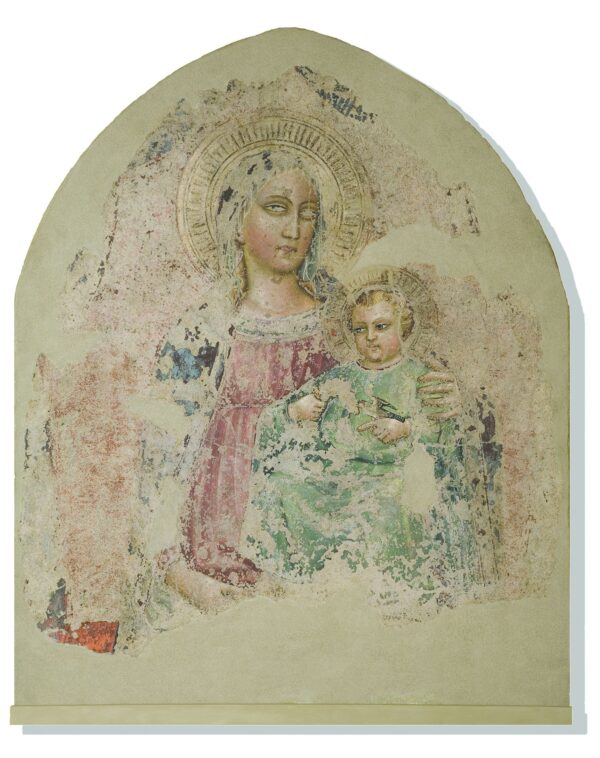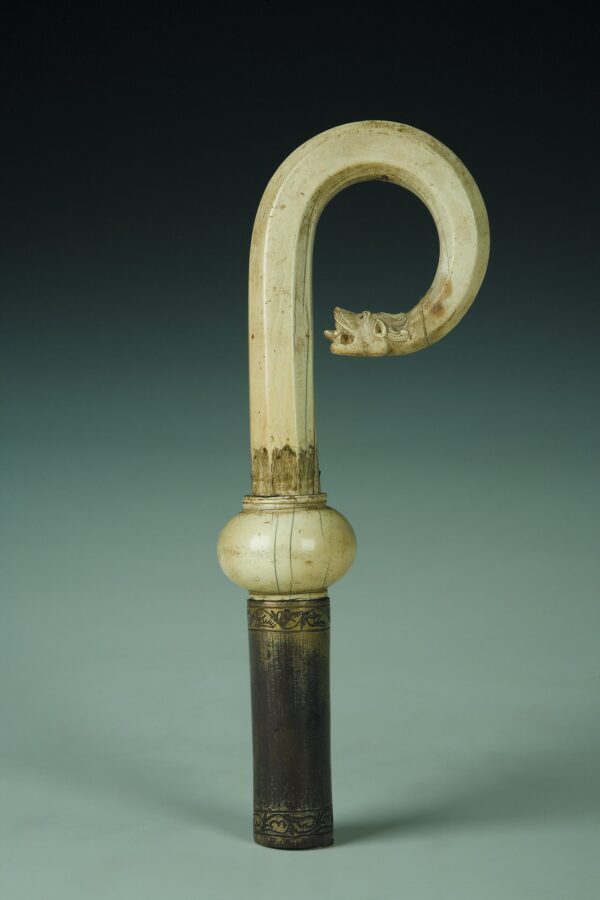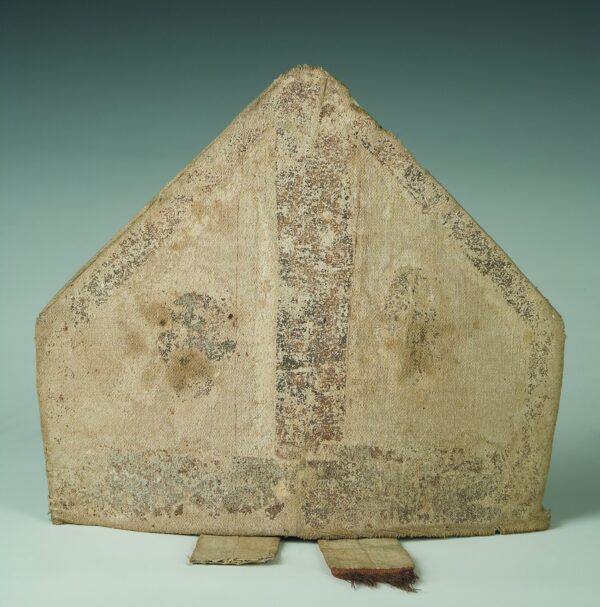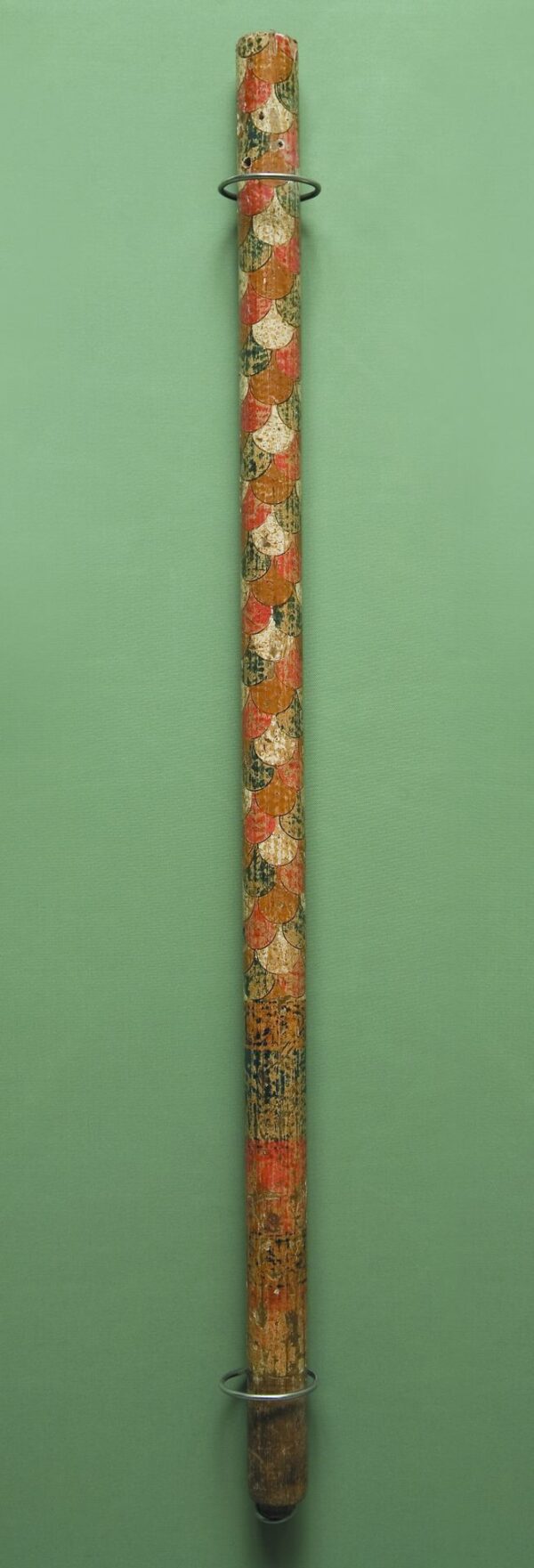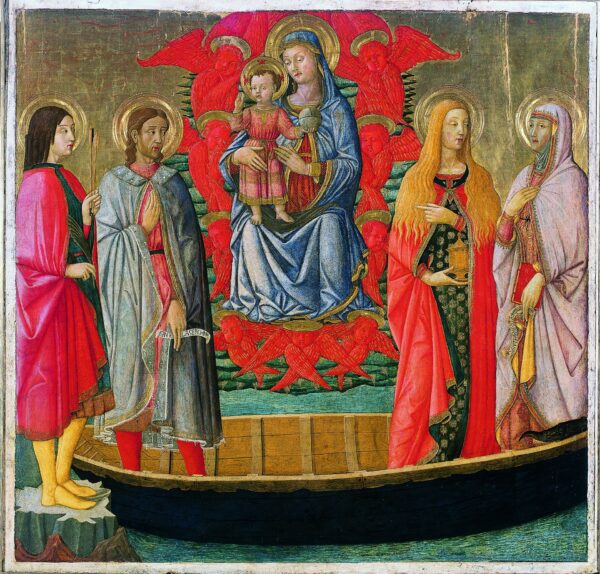- The Museum
- The Rooms
- Archaeology (1-6)
- Art (7-15)
- Room 7. Paintings, frescoes and Minor Guilds from the 13th to the 15th centuries
- Room 8. The great 16th-century paintings
- Room 9. 17th-century paintings
- Room 10. The jewellery room
- Room 11. 17th- and 18th-centuries paintings and jewellery
- Rooms 12-13. The sacred vestments
- Room 14. The relics of Giuseppe Montanelli (Fucecchio, 1813-1862)
- Room 15. The Arturo Checchi collection (Fucecchio 1886 – Perugia 1971)
- Nature (16-17)
- Collections
- Temporary exhibitions
- Events
- Multimedia
- Surroundings
- Versione italiana
Room 7. Paintings, frescoes and Minor Guilds from the 13th to the 15th centuries
In this room the oldest works of art in the Museum are exhibited. Among these are the items that tradition assigns to St Pietro Igneo (Florence, 11th century – Albano Laziale, 8 February 1089): the miter, and the ivory and wood pastoral. Of the great crucifix made by Berlinghiero Berlinghieri for the abbey of St Salvatore, perhaps commissioned by Abbot Giovanni, only the right table with St Lorenzo and an unidentified saint survives in Fucecchio. The fresco with the Madonna and Child, attributed to Francesco di Michele, is the result of the rescue in 1862 of a work of art destined for demolition together with the building in which it was located. The altarpiece by Giovanni di Ser Giovanni, known as the Scheggia, is developed indigeneously with the three saints Lazarus, Magdalene and Martha travelling from Palestine to Provence. The table for domestic devotion with the Madonna in adoration of the Child is attributed to Zanobi Machiavelli and bears the verses of Petrarch’s song 366 on the golden edge of Mary’s mantle.


